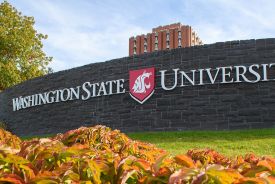Researchers Discover Brain Areas That Predict Tendency to Succumb or Resist Temptations, Study
ByResearchers from Dartmouth College and the University of Cologne have discovered brain regions related to reward and self-control that help determine whether a person succumbs to or resists daily temptations like desserts in daily life.
Researchers said that subcortical areas of the brain associated with affect and reward (e.g., nucleus accumbens) can help forecast whether people are likely to cave in to food cravings and desires in real life, whereas activity in prefrontal brain regions identified with self-control (e.g., inferior frontal gyrus), can help anticipate their ability to withstand temptation.
"Most people have difficulty resisting temptation at least occasionally, even if what tempts them differs," psychological scientists Rich Lopez and Todd Heatherton of Dartmouth College and authors on the study said in a press release. "The overarching motivation of our work is to understand why some people are more likely to experience this self-regulation failure than others."
For the study, 31 female subjects participated in an initial fMRI scanning session during two experiments.
In the first experiment, the participants were shown images of high-calorie foods like dessert items, fast-food items and snacks. They were asked to guess the location of each item, whether indoors or outdoors. Here, the researchers observed the activity in the nucleus accumbens in response to the food-related images.
In the second experiment intended to assess self-control ability, the participants were asked to press or not press a button based on clues provided with each image. Here, the researchers monitored activity in the inferior frontal gyrus (IFG).
The participants were then asked to report their food desires and eating behaviors per day for one week. When the participants expressed their desire for food, they were asked how strong was the desire and their resistance to it. If they eventually surrendered to the craving, they were asked to reveal the quantity of the food they ate.
The researchers found that participants who displayed higher activity in the nucleus accumbens in response to the food images were more likely to be associated with food desires. They are also more likley to succumb to their food cravings and ultimately eat the desired food.
"Reward-related brain activity, which can be considered an implicit measure, predicted who gave in to temptations to eat, as well as who ate more, above and beyond the desire strength reported by participants in the moment," said Lopez and Heatherton. "This could help to explain a previous finding from our lab that people who show this kind of brain activity the most are also the most likely to gain weight over six months."
© 2026 University Herald, All rights reserved. Do not reproduce without permission.








